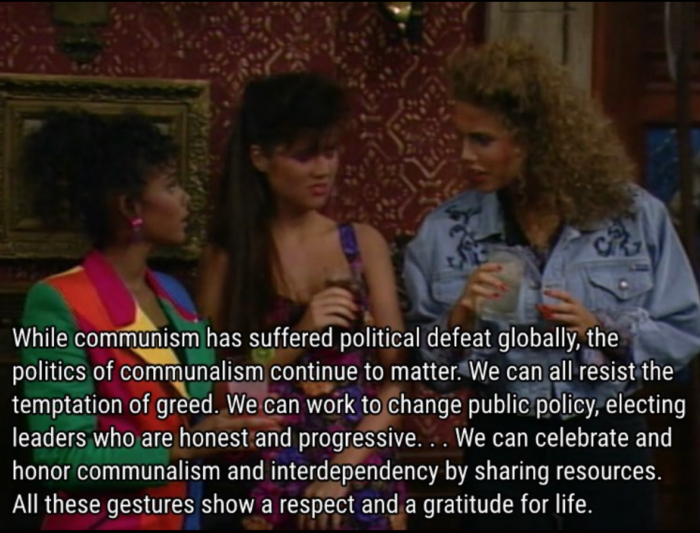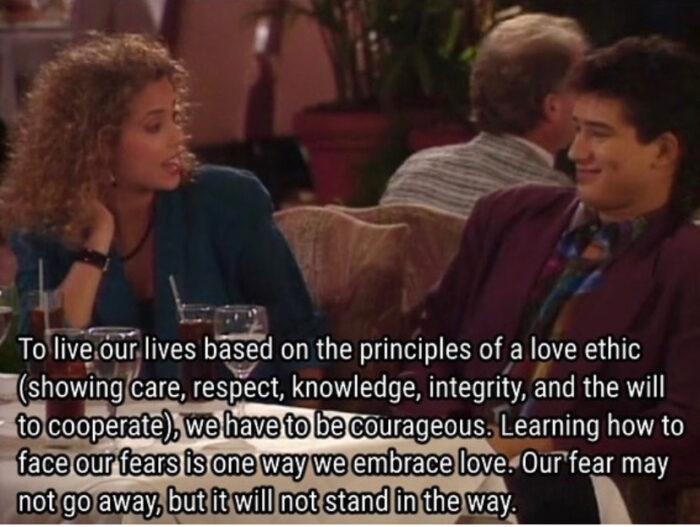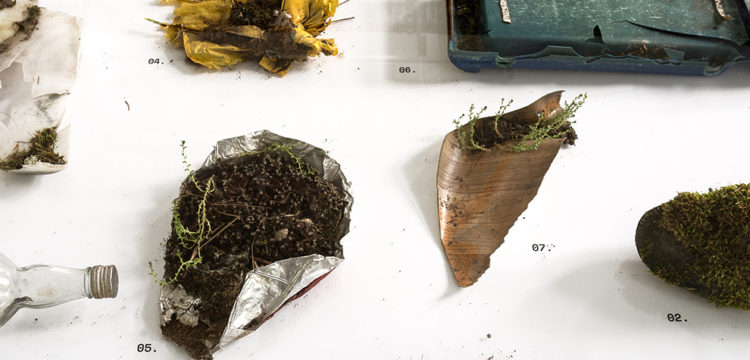Love Compounds
How to live with each other
Pavillon des Amours aka Pav.Lov. is a project by Laëtitia Badaut Haussmann on the place, role, and function of love in contemporary society. The Pavillon des Amours is conceived as a hybrid entity with multiple temporalities, container and content, initiator and vector. The project takes place in a mobile architecture, a pavilion-like ephemeral sculpture whose primary function is to host meetings of professionals from various backgrounds for three days of cross-disciplinary discussions on love and related aspects. The Pavillon des Amours will take place from June 29th to July 1st in Paris, France. Commissioned by Laëtitia Badaut Haussmann, the following text acts as an anti-chamber to the event and will appear alongside other writings in an upcoming publication.
After a few years of my sister being unwell, my grandma told me: if I could take a pill to make her pain go away, I would. Idealistic yet unattainable, her sentence resurfaced in my memory as I approached the subject of love. Perhaps it was the fierceness of her words that struck me, her wish to risk suffering to protect a person she loved. And to do so, she needed something quick and efficient to stop the hurt.
Love tending to selflessness is of a rare kind. Although it is expected to exist in family ties, this is not always the case. Conversely, if biological relationships don’t naturally incorporate love, the latter can germinate in other spaces. In the case of my grandma, she might not have had the same feelings for other people as for her granddaughter. Yet, she practised similar degrees of commitment to her community. In the little village where she spent her life—a rural area in Northern Italy of barely one-thousand inhabitants—she visited friends and neighbours regularly. She gave them medications and performed injections when needed (apparently, at the time, it was common that people learned these medical skills without being doctors or nurses). They shared resources: fruits and vegetables from their gardens, childcare, skills and advice. She heard about their joys and pains without making a hierarchy of their grief. She’d gossip with them, too.

I consider these behaviours—of care, affection, nurturance, respect, responsibility, and service—and the values that inform them to explore wider definitions and practices of love in everyday life. Today, the fracturing of the nuclear family unit that many experience is opening up new extended communities and care structures, giving freedom to find not only new models of reproduction but also of mutual support. At the same time, in popular culture and advertisements love is saturated and commodified, emphasising coupledom: a special kind of love reserved exclusively for romantic partners. An expanded notion of love beyond the romantic and the familial is necessary for moments of great divide and conflict. Although we live in close contact with others, we do not always use our time to care for one another in the face of ever-increasing challenges. Isolation and loneliness are some of the main causes of depression. As a result, feelings are managed chemically and pharmacologically like never before (consider the fact that the use of prescription medication, especially antidepressants in Europe continues to break records). No wonder my grandma thought of a pill to swallow to alleviate pain. If we need love more than ever, what recipes do we create to conjure it?
I. Molecular love
Researchers from anthropology to neuroscience refer to love as a form of attachment. In the case of romantic love, lust and attraction also come into play. But what remains in loving relationships, after the honeymoon phase has ended, is companionship, a deep sense of closeness: a bond. Scientists link this sense of attachment to what is popularly known as “the love drug” or “bonding hormone”, namely oxytocin. An ancient molecule found solely in mammals, oxytocin is a hormonal substance—naturally occurring in our bodies—which boosts feelings of physical, affection and intimacy. Produced by the hypothalamus in all humans regardless of sex, oxytocin is released when we are excited (sexually or platonically) by somebody or something we like—a new crush, a song, a puppy. The simple acts of touch, like giving someone a massage or a hug, or even the thought of it can prompt an oxytocin response. Higher levels of this hormone feed a sense of connection with others, leading to feelings of affection, intimacy, empathy, trustworthiness, and a greater sense of well-being. This also explains why low oxytocin levels have been linked to symptoms of depression.

Some medical researchers and pharmaceutical companies were eager to find monetisable ways to boost love and attachment on demand. Among the creations they came up with was an oxytocin nasal spray. Paul Zak, an academic and neuroeconomics, and supporter of the oxytocin inhaler, who periodically calls himself “Dr Love” declares in a TED talk: “Love is good for business.” Having spent decades working out how “oxytocin promotes trust” he explains how “countries with a higher proportion of trustworthy people were more prosperous,” so the more people took oxytocin, the more generosity and happiness we would find. “8 hugs a day—you’ll be happier and the world would be a better place” prescribes Dr Love, adding: “If you don’t like to touch people, I can always shove this up your nose” holding a dose in his hand. His instant love formula summed up: more oxytocin, less poverty, a free-loving society. If a substance was enough to boost love, why do the time-consuming labour that nurturing an emotional connection can demand?
Of course, the prospect that a quick sniff could induce instant gratification and emotional connection is just too enticing for many to ignore. However, research on the efficacy of oxytocin (via pill or nasal inhalation) to aid social bonding saw inconclusive results. Not only does oxytocin spray have short-lived effects, the chemical also struggles to enter the areas of the brain (not the heart) where bonding processes happen. More importantly, researchers discovered that oxytocin alone does not make one more attuned to all others; it makes one want to bond with those who are similar, those who share mutual identities based on gender, race, religion, or geography. Rather than increasing love and connection as a whole, it amplifies pre-existing associations, relationships, and emotional states—at worst, contributing to a polarisation between individuals, strengthened bias, and ethnocentrist attitudes.
With the widespread use of medication or mind-altering drugs to deal with various psychological conditions, a lack of love becomes another condition to be treated. Therefore, it could use a “chemical enhancement”. In recent years, researchers explored the possibility of “chemically-prescribing” love (i.e. safely targeting the underlying neurochemistry that supports attachment). As reported by ethicists Brian Earp and Julian Savulescu in their book Love Drugs, this could have some advantages. A study showed how couples, where a partner has PTSD, have benefited from the regulated use of MDMA. The drug seems to release the defence mechanisms that prevent people with trauma from opening up. Despite the alluring prospects of this research, the focus has always been primarily on making existing couple relationships more durable, so between people who had already developed a bond, possibly based on existing shared values. But how do we connect when values are not aligned, when differences set us apart?

The one-sniff-of-oxytocin-fits-all approach and other chemical enhancements avoid facing the complex sociocultural and interpersonal factors that make up relationships while treating socially-contrived differences as biologically baked-in. Yet, humans are not entirely helpless to the workings of their chemical composition. Emotions and behaviours are not just physically instantiated. They are also cultural constructs, which must be unpacked. If we are to live in love, the first step requires us to make a distinction: between affect and act. Between love as primarily an emotional state and love as a behaviour.
II. “love is as love does”
“Most of us learn early on to think of love as a feeling,” writes bell hooks in her seminal publication all about love. In her ongoing research as a cultural critic, she delved into the role of love in modern Western societies, by looking at popular culture—songs, movies, and TV programmes—self-help books, philosophical and spiritual writings to social situations, and personal experiences. What she noticed was great confusion about the meaning of love; a general tendency to avoid intimate conversations or thoughtful engagement with the subject. At the same time, she saw a deep longing for it. So, hooks set out to provide some clarity by finding a common definition that would overcome the myth that love means different things to different people. “Imagine how much easier it would be for us to learn how to love if we began with a shared definition,” she writes. Drawing from the work of various psychiatrists, among others, of M. Scott Peck, she reports: “When we feel deeply drawn to someone, we cathect with them; that is, we invest feelings or emotion in them.” This process of emotional attachment, or “cathexis”, is commonly associated with the initial phase of an intimate relationship. It happens with a person we like, but also with an object and an idea. Hooks warns us of confounding this feeling with loving, as affection and attachment are only part of the recipe. “To truly love,” she attests, “we must learn to mix various ingredients–care, affection, recognition, respect, commitment, and trust, as well as honest and open communication.”
What makes this understanding of love so relevant and powerful is that it comes with a choice. “When love is an act of will”—declares hooks by quoting Peck—“namely both an intention and an action, we choose to love, we do not have to love.” This implies that love is not just something we accidentally fall into. It’s not compulsory. One can decide to exit a toxic “love” relationship in the face of care, respect, and love for oneself and others; to engage in a relationship that comforts and frees one rather than one that makes them feel constantly inferior or hurt. It might not be easy and the suffering may not entirely disappear, but it will not stand in the way. This liberating definition gives agency to the lover. By distinguishing the noun from the verb, the feeling from the act, hooks invites us to see loving as a set of values and attitudes, rather than only as a feeling. Rather than giving a love cure (i.e. in the form of a nasal spray), an antidote that hardly works for all, hooks offers a practice of love, countering “the more widely accepted assumption that we love instinctually.”
There are many ways to put these acts of love into practice. On a personal level as self-love, utilising all its dimensions—care, commitment, trust, responsibility, respect, and knowledge—toward one’s own nurturance and acceptance. According to hooks, this is the foundation of a loving practice—for one cannot expect from others what one cannot give to oneself, as the maxim goes. An exercise in self-loving is to imagine the love we wish to receive from others and give it to ourselves. On a social level, love can be practised by moving from within to outwards, applying these values in our everyday lives, and making communities wherever we are. “There is no better place to learn the art of loving than in community” writes hooks, defining it as a group of individuals who “communicate honestly with each other, whose relationships go deeper than their masks of composure, and who have developed some significant commitment to rejoice together, mourn together, and to delight in each other, and make others’ conditions our own.” A community does not need to be the family of origin or an organisation that requires attending meetings, but also friendships and people we encounter every day and to whom we choose to commit.

My grandma, for example, showed up for the people around her, as she did for her family, by being present in times of need—but also creating moments of company and playfulness by inviting acquaintances and friends (including my own) to stop by her place for a chat and sit in her garden where they shared stories, food, and advice. A similar love ethic was practised by a friend I met over a decade ago, who ran a small café in East London. This café was a space where people did not have to constantly consume and quickly leave after their meals in order to make space for the next customer. Here, people could spend time with others, work, or be somewhere other than home. As many were regulars, my friend would listen to them, try to understand their positions and gently encourage them to improve their lives. He would offer various forms of support (having trained in psychotherapy) or connect them with people who could help. Many found new jobs; some got married (also to people they met in the café); others broke up or took the courage to pursue an education, change career, and be more confident in their work and lives. Where love is expected to come from biological families and existing ties who don’t know how to practise it, choosing this love ethic brings freeing changes and deeper connections, and, in turn, less loneliness and depression. To live in love is a necessary condition—not a highly individualistic, coupledom, and marginal phenomenon, but a social one, rooted in interdependence. It is also an essential condition for an understanding of how to live with each other.
“Love takes off the masks that we fear we cannot live without and know we cannot live within” writes James Baldwin in The Fire Next Time, pointing to another level of love, an interpersonal and political one. By love, Baldwin did not mean it “merely in the personal sense but as a state of being, or a state of grace—not in the infantile American sense of being made happy but in the tough and universal sense of quest and daring and growth.” Confronted with blinding racism in the US and the escalating anger of many colleagues in the civil rights movements, Baldwin acknowledged that affirming interdependence between individuals who were not considered equal by the system carried with it considerable risk. To disclose oneself to others was to put one’s identity and bodily self in a state of vulnerability. Yet instead of rejecting this risk, he questions what it would mean to live in a world where all citizens dared to live and define themselves in light of one another. This does not mean that we need to love everybody in the same way, but that we choose to embrace a love ethic and come together across differences in order to improve our living environment. And to do this, to make interdependence work, hooks suggest cultivating awareness. “Being aware enables us to critically examine our actions to see what is needed so that we can give care, be responsible, show respect, and indicate the willingness to learn.”

When love requires putting oneself at risk, where do we balance self-love and the love we give? If there was a pill we could take to alleviate the pain of a loved one—as my grandma suggested—would we go for it? Despite her inclination to recur to “chemical enhancements”, my grandma never gave up on doing the labour of love, even when she did not know if she would see the results. Yet, her commitment was fully recognised. When she departed last year, I was impressed by the number of people who attended her memorial. People whom I had never seen before, who had a deep respect for her. She was not famous or known for her social status. She was of humble origins and loved by many.
Love is an amalgam of specific ingredients requiring constant adjustment. We might learn to measure these neurochemical, social and cultural components by living with and supporting others, committing to communicating and showing care and respect even when we do not know or feel their pain. Of course, this does not come without commitment. What could help us when emotional labour becomes too much to handle? We might recur to chemical compounds, acts of will, or both. We might take the risk of loving in the face of difficulties if, as Baldwin suggested, we all agreed—mutually and consistently—to take this risk.
Pavillon des Amours is supported by Mondes Nouveaux, a grant from French Ministry of Culture.





